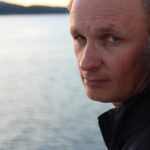In the late 1990s, the Center for the Study of World Religions at Harvard University initiated a project aimed at making explicit the ecological understandings implicit within “the world religions”: Judaism, Christianity, Islam, Hinduism, Jainism, Buddhism, Daoism, Confucianism, Shinto, and indigenous religions. Overseen by the scholars Mary Evelyn Tucker and John Grim, a series of conferences eventuated in a series of published books summarizing the best scholarship addressing the question “What is ecological?” within the world religions. Every world religion, each from different understandings, to varying degrees, with a diversity of emphases, has its own distinctive way of understanding the Earth and the ecological as sacred. This needs to be recognized and brought forward – as world religions by and large have not emphasized this potential within themselves but have pursued either more anthropocentric, otherworldly, or supernatural interpretations. It is crucial at this juncture to overcome and outgrow those emphases and pursue an Earth-based spirituality.
A link to the book series is provided here.
The Harvard series should not be considered the only work to consider the ecological potential within world religions; for example the World Wildlife Fund (WWF) funded a number of conferences in the 1980s and 1990s on the theme “spiritual ecology” (e.g., a conference in Assisi in 1986 that led to The Assisi Declarations: Messages on Humanity and Nature from Buddhism, Christianity, Hinduism, Islam & Judaism; and the founding of the Alliance of Religions and Conservation (ARC), which existed from 1995-2019).

In her 2003 book Worldly wonder: religions enter their ecological phase, Mary Evelyn Tucker clearly articulates the challenge and promise of this undertaking. She says “The challenge for religions is both to revision our role as citizens of the universe and to reinvent our niche as members of the Earth community.” (p. 7) Traditionally, world religions have offered a more regionally-bound, more historically-bound, and in most cases, more humanly-bound visions, proposed within self-referential terms. In the 21st century they are presented with the challenge to revision and reinvent. Tucker asks: “Can religions situate their stories within the universe story? Can they revision human history within Earth history? Can the religions open up their traditions to embrace the planet as home and hearth? Can religions re-evoke and encourage the deep sense of wonder that ignites the human imagination in the face of nature’s beauty?” (p. 8)
It is a great encouragement that by and large specialized scholarship considers the answer to these questions to be “yes”. This affirmation is only possible however if religions do not remain static, bound to their past, or tied to doctrines that history and world events have superceded. “The emergence of the world’s religions into their ecological phase and their planetary expression implies not simply reformation but transformation. For as they identify their resources for deeper ecological awakening – scriptural, symbolic, ritual, and ethical – they will be transforming the deep wellsprings of their tradition into a fuller expression.” (p. 10)
The ecological crisis identifies one commonalty across the diversity of expression of world religions, which is the demand that they transform. As Tucker described, however, this is not a transformation that demands religions leave their essential identity behind, but a transformation that raises that essence into its fuller expression. In becoming more Earthly, world religions should also grow into a more full truth of what they have always believed. “Can religious traditions help us to find our niche as a species that does not overextend our effects and overshoot the limitations of fragile ecosystems? Indeed, the environmental crisis calls the religions of the world to respond by finding their voice within the larger Earth community. In so doing, the religions are now entering their ecological phase and finding their planetary expression.” (p. 9)
Contemplative ecology is part of this effort towards transformation, that retrieves and revisions and reinvents the religious toward ecological reconciliation and a planetary expression of the deep truths of religion that are truths both always already intimated (and thus we can look back, and belong, to a past that orients us), and simultaneously beyond us, beckoning us to growth and maturity (and thus we can look forward, with resolve, to a future that redeems us).

